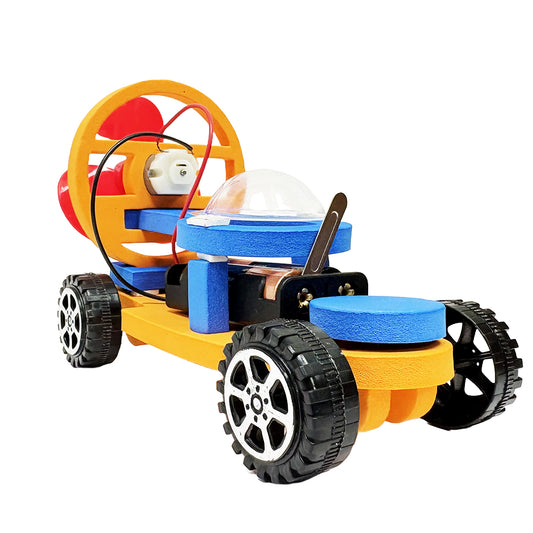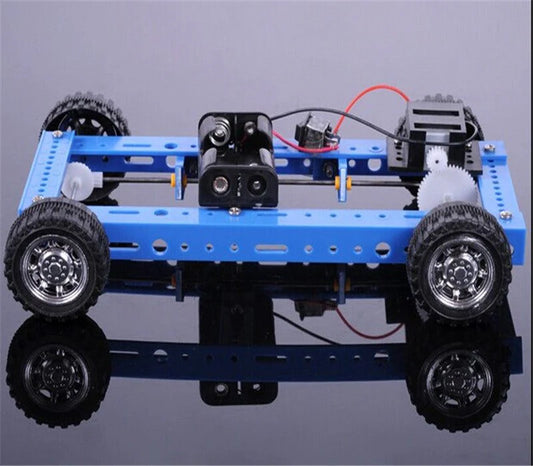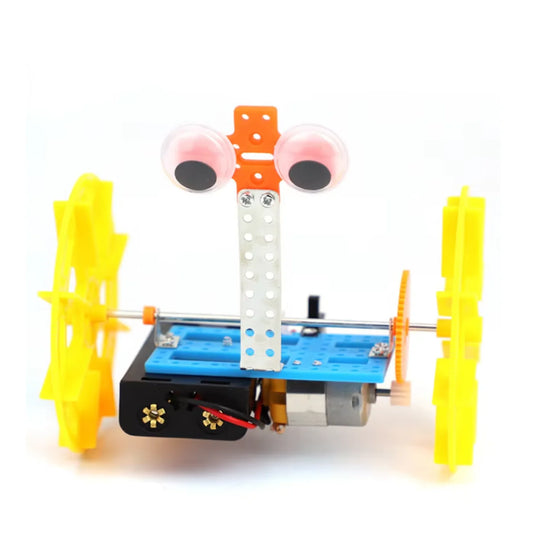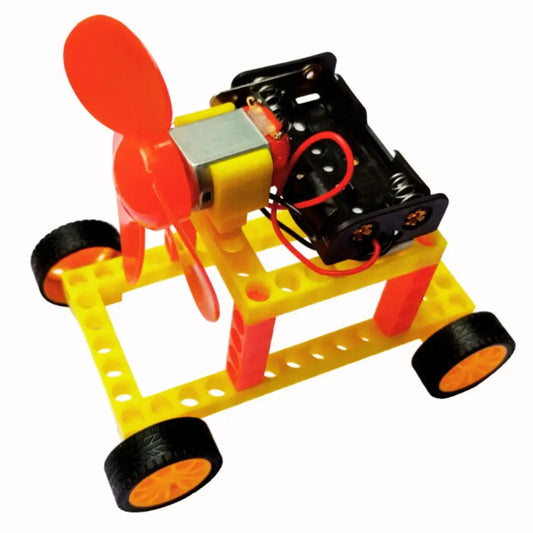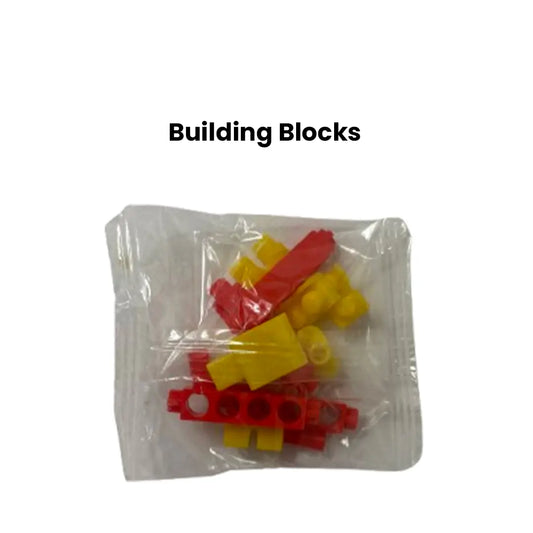
Arduino Kit - Ultimate Playground for Inventors
IEM Robotics
Table of Contents
What is arduino?
The arduino starter kit
Components of an arduino kit
Well-known arduino kit
Beginner-friendly projects to try out
Coding for arduino
Tips on how to get the most out of your arduino kit
Conclusion
If you’ve ever wanted to build a robot, automate your home, or explore electronics, you’ve likely come across Arduino kits. But getting started with electronics can feel overwhelming. That’s where these kits come in. Arduino kits are perfect for beginners, students, and hobbyists. They include everything you need in one box — a microcontroller board like the popular Arduino Uno, along with sensors, LEDs, jumper wires, resistors, and more. These components are designed to work together, helping you start building real projects easily.
Most kits also come with step-by-step guides to make exciting things like digital thermometers or motion-activated lights. These kits are a fun and affordable way to learn by doing, experiment with new ideas, and develop problem-solving skills.
Whether you’re teaching STEM, learning coding, or just curious about robotics, Arduino kits from IEM Robotics are a great way to begin. In this blog, we’ll show you what’s inside a typical kit and how to choose the best one — so you can start building your own tech creations today!
What is arduino?
To understand what is arduino kit is, it is first essential to understand what an Arduino is. Simple, programmable microcontroller boards are the foundation for the open-source Arduino hardware and software platform. You may create code and upload it to the board, which can then communicate with various circuits, including motors, displays, sensors, and LEDs. The following are its key features:
1. User-friendly IDE: Code can be written and uploaded using the Integrated Development Environment.
2. Cross-platform compatibility: operating on Linux, macOS, and Windows
3. Strong community support: contains dozens of sample projects, libraries, and tutorials.
4. Scalable complexity: appropriate for users of all skill levels.
The arduino starter kit
If you want, you can buy individual components for using Arduino; however, if you are a beginner, it is much easier to buy an arduino starter kit. The following are some of its features:
1. All of Your Needs in One Box: Arduino kits usually include everything you need to get started, including an Arduino board, USB cables, LEDs, resistors, buttons, sensors, and occasionally motors or LCD panels. Thus, you don't need to make several purchases or predict what you'll need.
2. Cost-effective: Purchasing a kit is frequently less expensive than buying individual parts. Additionally, it avoids compatibility problems and saves money on delivery.
3. Guided Projects: The majority of kits include a handbook or access to online tutorials that lead you through actual projects. This methodical education increases confidence and lessens frustration.
4. Experimentation-Friendly: With so many different parts, you can experiment with many different concepts and little projects without having to purchase additional parts.
Components of an arduino kit
Several components come with the arduino students kit, making it easy to work with.
1. Arduino board: The most widely used board in the Arduino family is typically the arduino uno kit. It features power jacks, a USB port for programming, six analog inputs, and fourteen digital input/output pins.
2. Breadboard: A breadboard is a board used for solderless circuit prototyping. Components are simple to plug in and connect with jumper wires.
3. Jumper Wires: Jumper wires connect the breadboard's components. There are three types: male-to-male, male-to-female, and female-to-female.
4. LEDs and resistors: Resistors with LEDs work well for basic status or on/off indicators. They also help control the current to prevent parts from burning out.
5. Sensors: Common sensors found in many kits include:
- Sensor for temperature
- LDR, or light-dependent resistor
- A sensor for ultrasonic distance
- Infrared sensor
6. Motors and Servos: Some sophisticated kits include motors and servo motors, which allow you to construct moving parts or robots.
7. Displays: LCD or OLED panels may be incorporated to display customized messages or sensor data.
8. Switches and buttons: These parts enable you to design interactive projects, such as pressing a button to control an LED.
Well-known arduino kit
These are a few of the most well-liked and approachable arduino kit on the market right now:
1. Arduino Uno Kit: The Arduino Official Starter Kit, which comes directly from the company that created Arduino, includes an authentic Uno board and more than 170 components. It also includes a comprehensive project book that guides you through 15 projects, from creating a musical instrument to making LEDs blink.
2. Elegoo UNO Project Super Starter Kit: This kit is very popular among beginners because of its extensive component list and price. It has an LCD screen, a stepper motor, an IR remote, a Uno-compatible board, and more than 200 parts.
3. Vilros Arduino Uno 3 Ultimate Starter Kit: This excellently packed kit is designed for beginners and includes a user-friendly instruction booklet, sensors, a breadboard, and the Uno R3 board.
4. Freenove Ultimate Starter Kit: This kit supports programming languages including C/C++, MicroPython, and even JavaScript (with additional setup). It has a large number of modules and comprehensive documentation.
Beginner-friendly projects to try out
You can try out multiple projects once you have unboxed the Arduino Starter Kit Multi-Language kit. Following are some beginner-friendly ideas for you to try out, along with having fun and inclusive learning
1. LED blinking and fading: The Arduino "Hello, World" Learn how to turn an LED on and off, then use pulse width modulation (PWM) to fade in and out gently.
2. Traffic Light Simulator: To mimic a traffic signal, use red, yellow, and green LEDs. Include buttons to enable pedestrian crossings.
3. Temperature monitor: You may construct a miniature weather station using an LCD monitor and a temperature sensor.
4. Light Sensing lamp: To simulate automatic night lighting, use an LDR (light-dependent resistor) to switch on an LED as it darkens.
5. Ultrasonic distance sensor: Determine an object's distance and show it on the LCD or serial monitor.
6. Digital dice: LEDs simulate the face of a dice. When a button is pressed, LEDs illuminate to display numerals one through six.
Coding for arduino
If you're not a programmer, don't worry. Arduino's IDE (Integrated Development Environment), which runs a condensed version of C/C++, makes writing and uploading code simple. Most kits include sample sketches, code files in Arduino that you may copy, paste, and modify.
Here is an example of a simple sketch to make an LED blink:
void setup() {
pinMode(13, OUTPUT); // Set pin 13 as output
}
void loop() {
digitalWrite(13, HIGH); // Turn LED on
delay(1000); // Wait 1 second
digitalWrite(13, LOW); // Turn LED off
delay(1000); // Wait 1 second
}
Tips on how to get the most out of your arduino kit
To get the most out of the kit, no matter the arduino kit price, here are some things that you should keep in mind:
1. Start simple: Don't jump into complicated projects too soon. Start by reading sensor data or blinking LEDs.
2. Document everything you do. Keep a record of your endeavors, note what succeeded and failed, and make changes.
3. Use online resources: YouTube, forums, and the official Arduino website offer a wealth of instructions and assistance.
4. Don't be afraid of making mistakes. Trial and error is Part of the process; moreover, LEDs that have burned out and perplexing faults are instructive.
5. Join a community: For learning and sharing, local makerspaces, Instructables, and Reddit's r/arduino are excellent resources.
Conclusion:
More than just a set of cables and parts, arduino kits foster creativity, ingenuity, and experiential learning. Constructing and programming your gadgets is a superpower in a world where technology is influencing everything. The ideal starting point is an Arduino kit. You might be surprised by what you can create, so open that box, connect it to your board, and get to work constructing something incredible.

